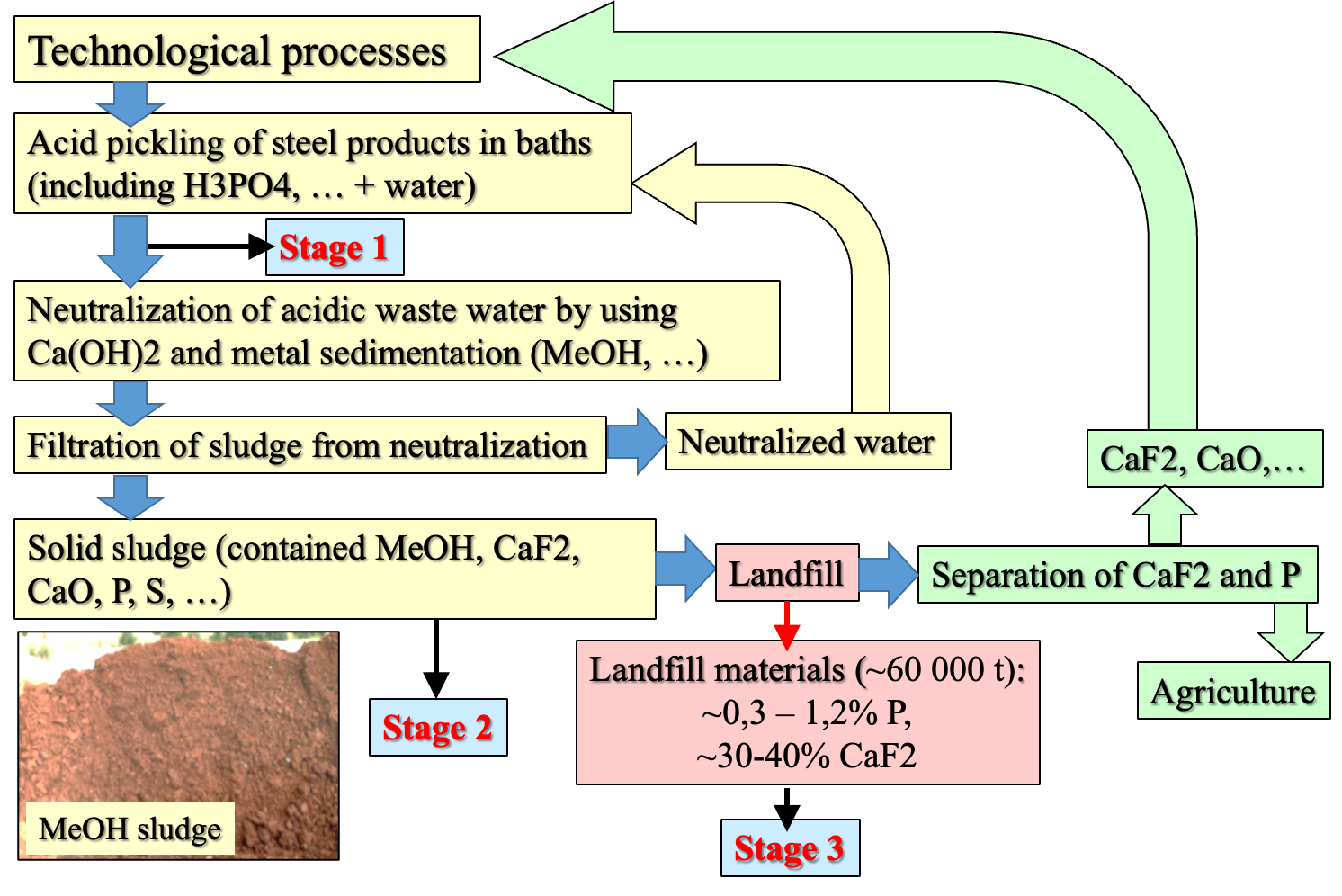P purification of MeOH sludge to produce synthetic fluorspar and to recover phosphorus
The overall objective of the project is to attain the development of technically feasible and commercially and environmentally sustainable synthetic fluorspar from phosphorus-containing metal hydroxide sludge for application in the metallurgical and phosphorus industries of high quality and economically viable for broader applications in other industries, such as mineral fertilizer.

Funding Agency
Vinnova (Reference number 2023-02519)
Beginning and End Dates
27 October 2023 to 4 October 2026
Contacts
Other information
Call: Increased resource efficiency, industry funding to a circular economy / Circular and biobased economy.
This project responds to Sustainable Development Goals 9.4, 12.4 and 15.2. Pickling bath neutralization sludge is a residual waste that can be reduced by valorization as synthetic CaF2 and the P removed can be used as a mineral fertilizer. Providing an outlet for metal hydroxide sludge through the application of more sustainable technologies would benefit both the steel making and forestry industries.
KTH is the project coordinator and contributes to all 5 work packages. Alleima AB provides MeOH sludge samples and expertise in the use of synthetic CaF2 in metallurgy and contributes to the economic analysis (3-4). Fortum Waste Solutions AB provides expertise in P removal from MeOH sludge and process scale-up (1-3). Sveaskog AB contributes with their expertise regarding P requirements as a fertilizer in the forest industry. All partners will actively contribute to the management and dissemination of the project (5).

